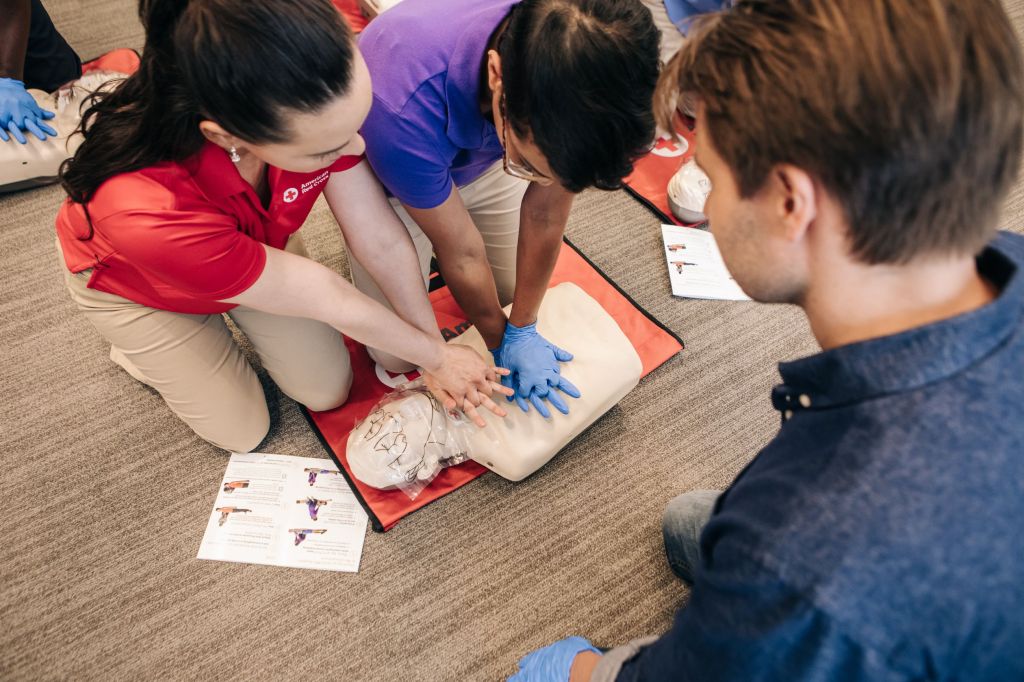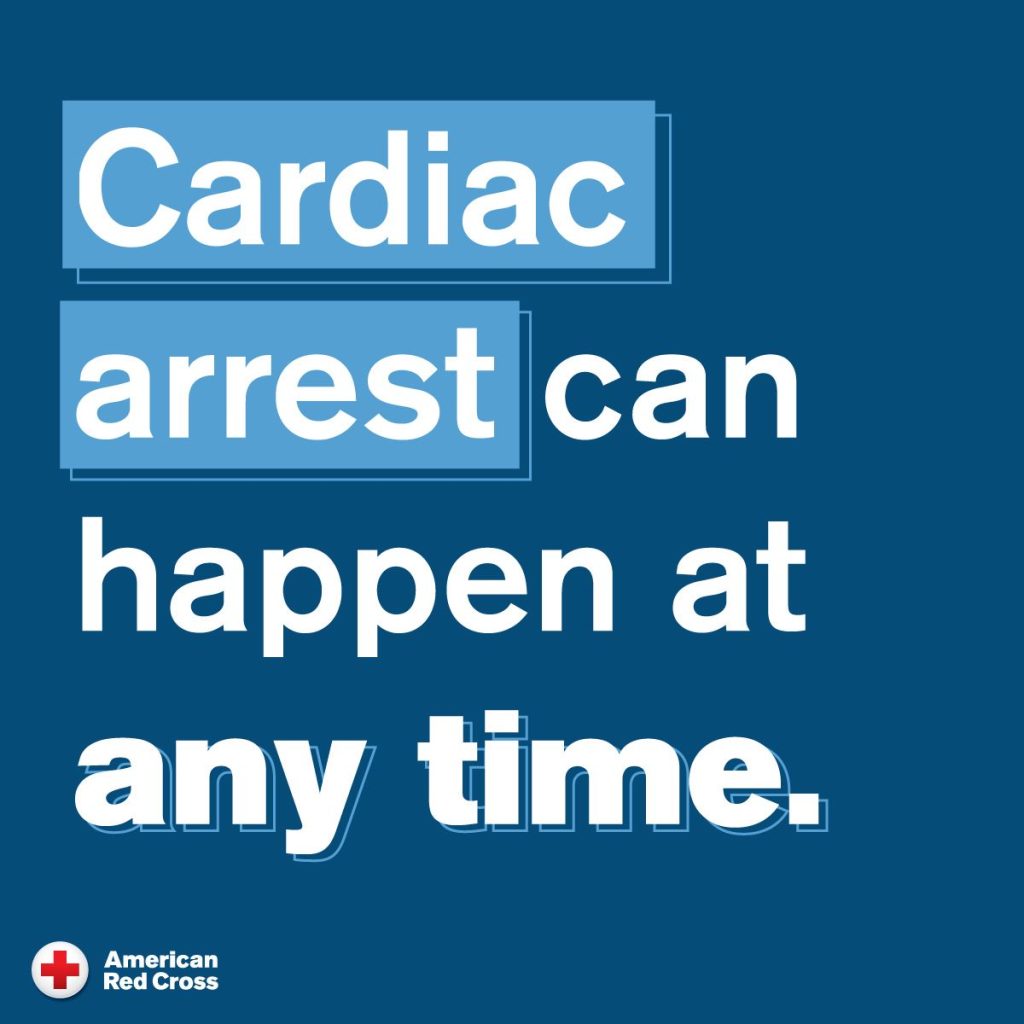By Haley Heisley
The first week of June (1st-7th) each year marks National CPR and AED Awareness Week – acronyms for procedures I always hear about, but up until I began working in the clinical healthcare setting, never truly understood how important efficiency with these procedures really is.
In my Nursing classes at my university, all students are mandated to be certified in CPR/AED by the American Red Cross. I was shocked to learn that no one in my class ever had to perform CPR or use an AED on a real person outside of using a mannequin during the certification class – including myself.
How would I know if I was performing CPR effectively? A real person doesn’t light up green like the mannequins do if you are performing it right, so how would I know? What if did it completely wrong? To perform CPR and use an AED is something I am certified to do, but when realizing the major importance of these acts, I knew I had to do more research.
What is CPR and an AED?
People trained in CPR (Cardiopulmonary Resuscitation) and AED (Automated External Defibrillator) save lives. CPR is crucial to maintain blood flow to the heart, and an AED defibrillator ensures maintenance of a natural heart rhythm by shocking the heart, which prevents death and/or brain damage. It’s important to start CPR as soon as possible, especially if waiting on an AED to arrive to the scene. Even though CPR may only deliver a small amount of blood to the heart, it is a critical amount that can be the difference between life and death.
When do we perform CPR and use an AED?
One of the most challenging issues with CPR is knowing when to do it in an emergent situation.
- You can tell if a person needs CPR performed if:
- They are not breathing.
- They are taking gasping breaths.
- If you cannot feel a pulse.
- They are unresponsive/unconscious.
Once determining any of these factors, CPR must be started immediately to increase the risk of survival. CPR should only to be stopped if the person becomes responsive and stable or if an AED is present. An AED is extremely effective when used alongside CPR and increases rate of survival in the person.
How do you perform CPR and use an AED?
The Red Cross provides us with step-by-step directions on how to perform CPR and use an AED.
7 Steps to perform CPR on an Adult:
- CHECK the scene for safety. Form an initial impression, and use personal protective equipment (PPE).
- If the person appears unresponsive, CHECK for responsiveness, breathing, life-threatening bleeding or other life-threatening conditions using shout-tap-shout.
- If the person does not respond and is not breathing or only gasping, CALL 9-1-1 and get equipment, or tell someone to do so.
- Kneel beside the person. Place the person on their back on a firm, flat surface.
- Give 30 chest compressions:
- Hand position: Two hands centered on the chest.
- Body position: Shoulders directly over hands; elbows locked.
- Depth: At least 2 inches.
- Rate: 100 to 120 per minute.
- Allow chest to return to normal position after each compression.
- Give 2 breaths.
- Open the airway to a past-neutral position using the head-tilt/chin-lift technique.
- Pinch the nose shut, take a normal breath, and make complete seal over the person’s mouth with your mouth.
- Ensure each breath lasts about 1 second and makes the chest rise; allow air to exit before giving the next breath.
- Note: If the 1st breath does not cause the chest to rise, retilt the head and ensure a proper seal before giving the 2nd breath If the 2nd breath does not make the chest rise, an object may be blocking the airway.
- Continue giving sets of 30 chest compressions and 2 breaths. Use an AED as soon as one is available! Minimize interruptions to chest compressions to less than 10 seconds.
- Complete the CHECK and CALL steps.
- As soon as an AED is available, turn it on and follow the voice prompts.
- Remove clothing and attach pads correctly.
- Remove all clothing covering the chest. If necessary, wipe the chest dry.
- Place one pad on the upper right side of the chest.
- Place the other pad on the lower left side of the chest, a few inches below the left armpit.
- Note: If the pads touch, place one pad in the middle of the chest and the other pad on the back, between the shoulder blades.
- Plug the pad connector cable into the AED, if necessary.
- Prepare to let the AED analyze the heart’s rhythm.
- Make sure no one is touching the person.
- Say, “CLEAR!” in a loud, commanding voice.
- Deliver a shock, if the AED determines one is needed.
- Make sure no one is touching the person.
- Say, “CLEAR!” in a loud, commanding voice.
- Push the “shock” button to deliver the shock.
- After the AED delivers the shock, or if no shock is advised, immediately start CPR, beginning with compressions.
By visiting our website for step-to-step narratives on how to perform CPR on children and babies and pets as well as adults.
Why is CPR and AED efficiency so important?
If there’s one thing I want you to take away from this article, it is the importance of efficiency in CPR and AED. It is a life-or-death skill in which every minute matters in a cardiac emergency. CPR can save the life of suffering from cardiac arrest, which can affect anyone, including infants and children. Scarily, many cardiac arrest victims don’t survive due to the lack of professional help outside of the hospital setting. If more Americans were trained in CPR, AED or Basic Life Support (BLS), cardiac arrest victims would survive long enough to receive the professional help their bodies need.
Fear is another factor that prevents bystanders from performing CPR in the event of a cardiac emergency. A person may worry that they will suffer consequences if the person they are helping dies. However, there’s a law to protect these helpers in all 50 states. The Good Samaritan Law offers legal protection to people who give reasonable assistance to those who are, or whom they believe to be injured, ill, in peril, or otherwise incapacitated. Even if one is not certified in CPR, they are encouraged to perform chest compressions until EMS arrives.
CPR and AED is so important to me after realizing how profound its impact can be in life or death scenarios. Many people are familiar with its components, but I encourage all to be more than familiar – and strive for excellence and comfortability in this area. It can make all the difference if faced with the event of having to save someone you love.
Visit our website for full list of American Red Cross classes.




One thought on “Get trained this National CPR/AED Awareness Week”